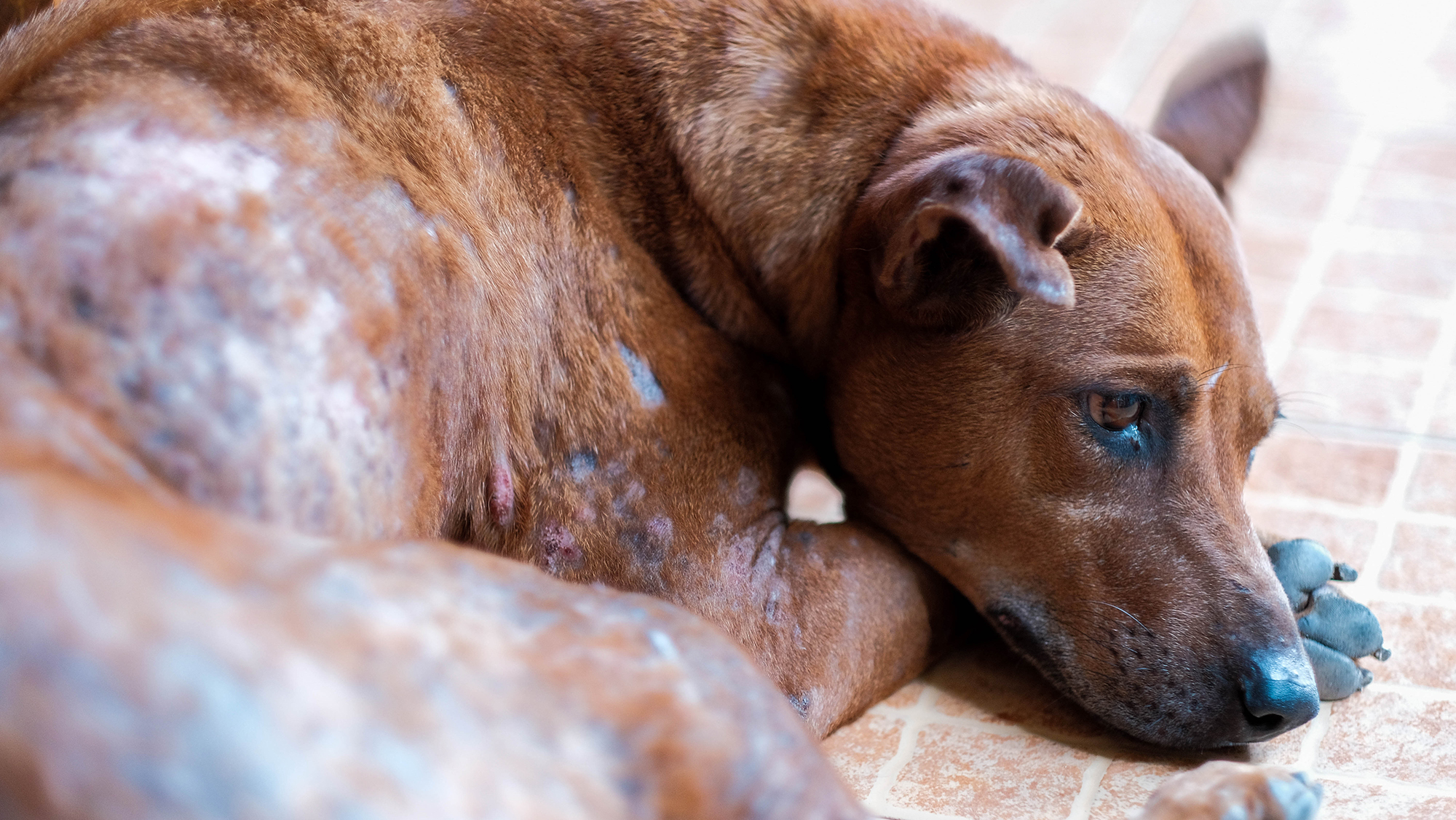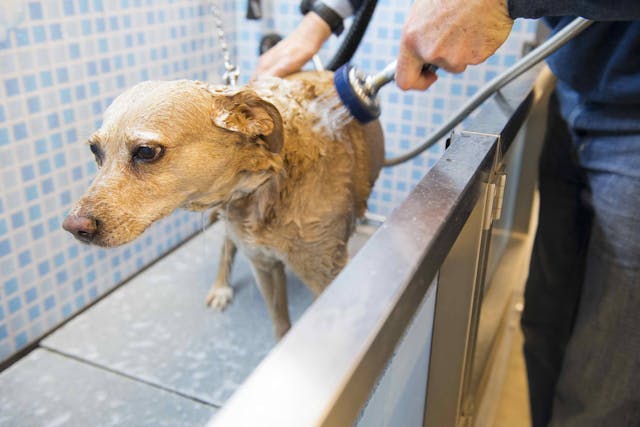Introduction:
Red mange in dogs, also known as demodectic mange, is a common skin condition caused by the overgrowth of Demodex mites. In this comprehensive article, we will explore the causes, symptoms, treatment options, and prevention strategies for red mange in dogs. By understanding this condition and its management, dog owners and veterinarians can work together to ensure the well-being and comfort of dogs affected by red mange.
Causes of Red Mange in Dogs:
Red mange is primarily caused by an overpopulation of Demodex mites, specifically Demodex canis, which naturally reside in the hair follicles and sebaceous glands of dogs. However, certain factors can contribute to the development of red mange, including:
- Weakened Immune System:
Dogs with weakened immune systems, such as puppies, older dogs, or those with underlying health conditions, are more susceptible to red mange.
- Genetic Predisposition:
Certain breeds, such as Bulldogs, Boxers, and Dalmatians, may have a higher predisposition to developing red mange.
- Stress and Environmental Factors:
Stressful conditions, poor nutrition, and environmental factors can weaken a dog’s immune system, making them more susceptible to red mange.
Recommended:
- Petco Review: The Power of Together
- PetSmart Review: Where Pets Inspire Us
- Hill’s Pet Nutrition Review: Pioneering Pet Health and Nutrition
- Royal Canine Review: Tailored Nutrition for Every Pet
- Chewy Review: Pet Care at Your Doorstep
Recognizing the Symptoms:
Identifying the symptoms of red mange in dogs is crucial for early detection and treatment. Common signs include:
- Hair Loss:
Red mange typically causes patchy hair loss, most commonly seen on the face, neck, and forelimbs.
- Skin Irritation and Inflammation:
Affected areas may appear red, inflamed, and may develop pustules or crusts.
- Itching and Scratching:
Dogs with red mange often experience intense itching, leading to excessive scratching and self-inflicted skin damage.
- Secondary Infections:
The compromised skin barrier due to red mange can make dogs more prone to bacterial or fungal infections.
Diagnosing Red Mange in Dogs:
To diagnose red mange in dogs, veterinarians may conduct various tests and examinations. These include:
- Skin Scrapings:
Microscopic examination of skin scrapings can detect the presence of Demodex mites and confirm the diagnosis.
- Skin Biopsy:
In some cases, a skin biopsy may be necessary to rule out other skin conditions and assess the severity of the mange infestation.
- Additional Tests:
Veterinarians may recommend additional tests, such as bloodwork or allergy testing, to identify any underlying health issues contributing to the development of red mange.
Treatment Options for Red Mange in Dogs:
The treatment of red mange in dogs aims to eliminate the Demodex mites, manage symptoms, and improve the dog’s overall health. Here are common approaches:
- Medications:
Veterinarians may prescribe topical medications, such as medicated shampoos or ointments, to kill the mites and soothe the skin. In severe cases, oral medications, such as ivermectin or milbemycin, may be necessary.
- Supportive Care:
Supportive care measures, including regular bathing with gentle shampoos, maintaining a clean environment, and providing a balanced diet, can help improve the dog’s overall skin health and immune system function.
- Monitoring and Follow-up:
Regular check-ups with the veterinarian are essential to monitor the dog’s progress, adjust the treatment plan if necessary, and address any secondary infections or complications.
Preventing Red Mange in Dogs:
Preventing red mange involves several strategies to support a dog’s overall health and immune system function. Here are some essential preventive measures:
- Good Nutrition:
Providing a balanced diet with essential nutrients can help strengthen the dog’s immune system and overall health.
- Stress Reduction:
Minimizing stressors and providing a calm and comfortable environment can help maintain a healthy immune system.
- Regular Veterinary Check-ups:
Routine check-ups allow for early detection of any underlying health issues and prompt intervention.
- Responsible Breeding:
Breeding practices that avoid mating dogs with a history of red mange can help reduce the risk of passing on the condition to offspring.
Conclusion:
Red mange, or demodectic mange, is a skin condition in dogs caused by an overgrowth of Demodex mites. By recognizing the causes, symptoms, and treatment options discussed in this article, dog owners and veterinarians can work together to provide the best possible care. Early detection, appropriate treatment, and preventive measures can significantly improve the well-being and comfort of dogs affected by red mange.
References:
- Miller, W. H., Griffin, C. E., & Campbell, K. L. (2012). Muller and Kirk’s Small Animal Dermatology. Elsevier Health Sciences.
- Scott, D. W., Miller, W. H., & Griffin, C. E. (2017). Muller and Kirk’s Small Animal Dermatology. Elsevier Health Sciences.
- Gross, T. L., Ihrke, P. J., & Walder, E. J. (2005). Veterinary Dermatology: A Practical Guide to Diagnosis and Therapy. Mosby.
- Nuttall, T., & Cole, L. K. (2001). Demodicosis. Veterinary Clinics: Small Animal Practice, 31(6), 1293-1307.

:max_bytes(150000):strip_icc()/dog-severe-mange-647103352-2000-f24c3643f6a645cf9ce5bff6df991c8d.jpg)
